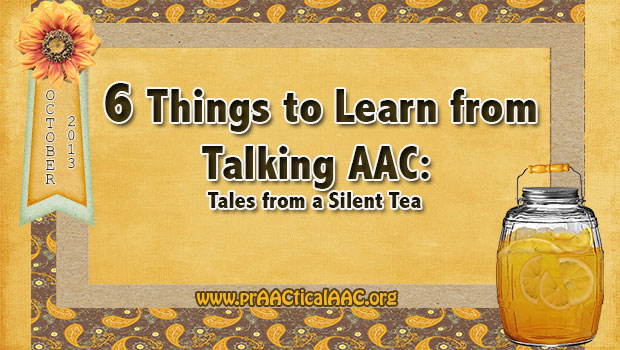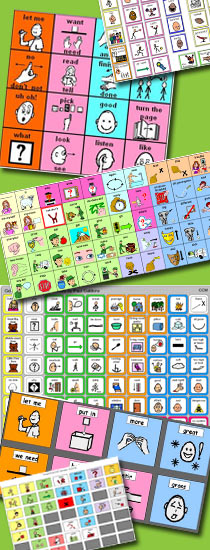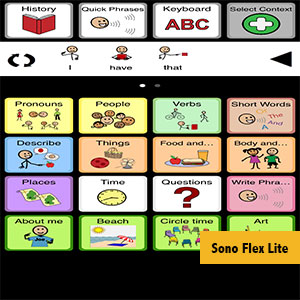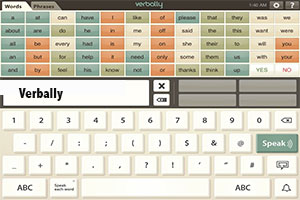6 Things To Learn From Talking AAC

We participated in a silent tea. We used no tech, low tech, and high-tech AAC. For 1 hour. With a group of graduate students, families, and clients. We only communicated with AAC, no natural speech. It was enlightening to say the least. We have done silent teas before, but not recently and as it turns out, a lot was forgotten.
Lessons Learned:
- Communication Takes Longer. Communication takes much longer when using a speech generating device. This is true even when you know the message you are trying to compose, even when you know where the symbols or words are located. We are pretty good at using pause time and waiting expectantly but realized we need to probably wait even longer for messages to be composed. As long as the interaction is continuing, waiting 45 seconds is not too long and if you see someone in the process of composing a message, you may need to wait even longer.
- Pre-Stored Messages were Not that Useful- We had some pre-stored messages ready for the occasion but realized only about 10% came in handy. So when we think about programming pre-stored messages, we need to realize they may not be that relevant.
- Communication Partners can be Really Helpful- There were some communication partners that helped a lot. There were many small groups of conversation. When the communication partner waited and did not engage in a second conversation while the AAC user (me) was constructing a message, it was much easier to stay focused.
- Keyboard Helped With Rate- Most of the participants relied heavily on using the keyboard to spell out messages. It seemed that even though we often encourage AAC users to use their individual words/symbols to communicate, that is not what we tended to do when we were trying to increase our rate. It may have been because we were new to learning the display but it definitely reminded us that when learning new locations of symbols, spelling out words may be easier and faster.
- Gestures Were Very Useful- Many of us used facial expressions and hand gestures to supplement our AAC message. This was helpful, but made us stop and think about those AAC users with limited movement. We were reminded how we need to accept and use all forms of communication including vocalizations, facial expression, and movements as part of the whole communication message.
- Simplification was Easier for Communication- When communicating for an authentic purpose, we noticed that we tended to simplify our message both in length and complexity. It seemed to be what we do when learning a new language (of course right). So at times, it may be important to stress learning language for increased length and complexity but at other times, simplification should be accepted. No one told us to ‘use a longer sentence’ in conversation.
- Motor Planning is a Big Issue- When spelling or even looking for symbols, our motor skills deteriorated or so it seemed. Because we were not well versed in the motor patterning for finding keys/cells we tended to spend longer and have more ‘mistakes’ with accessing correct keys. It put into perspective the impact of motor planning on accessing AAC.
Host a silent tea for AAC Awareness Month, Speak AAC for an hour a day or a week. Let us know your experiences.
Filed under: PrAACtical Thinking
This post was written by Robin Parker




4 Comments
Loved your blog on Silent Tea. Not only will our students have an interesting enlightening experience, but the families could use the exposure and practice.
Thanks for taking the time to let us know. Can’t wait to hear how about your silent tea.
I love this idea!! Especially when one is able to speak, it’s a way to enhance appreciation for thE “gift”. I’m thinking I might try one with the teachers in our department. When I lost my voice, I found texting and gestures to be the best AAC device for me at that time; however, I also fatigued quickly.
in regard to the keyboard use increasing rate. What is your feeling about using a core vocabulary page set (ie Wordpower 80) with a keyboard vs. just a page with the core words only where access to the keyboard would be one level down.
my daughter tends to gravitate to the keyboard immediately if it’s on the home page but there is some thought from her team that she would be quicker using core vocab and only seeking out the keyboard for non core words.
any thoughts on this?